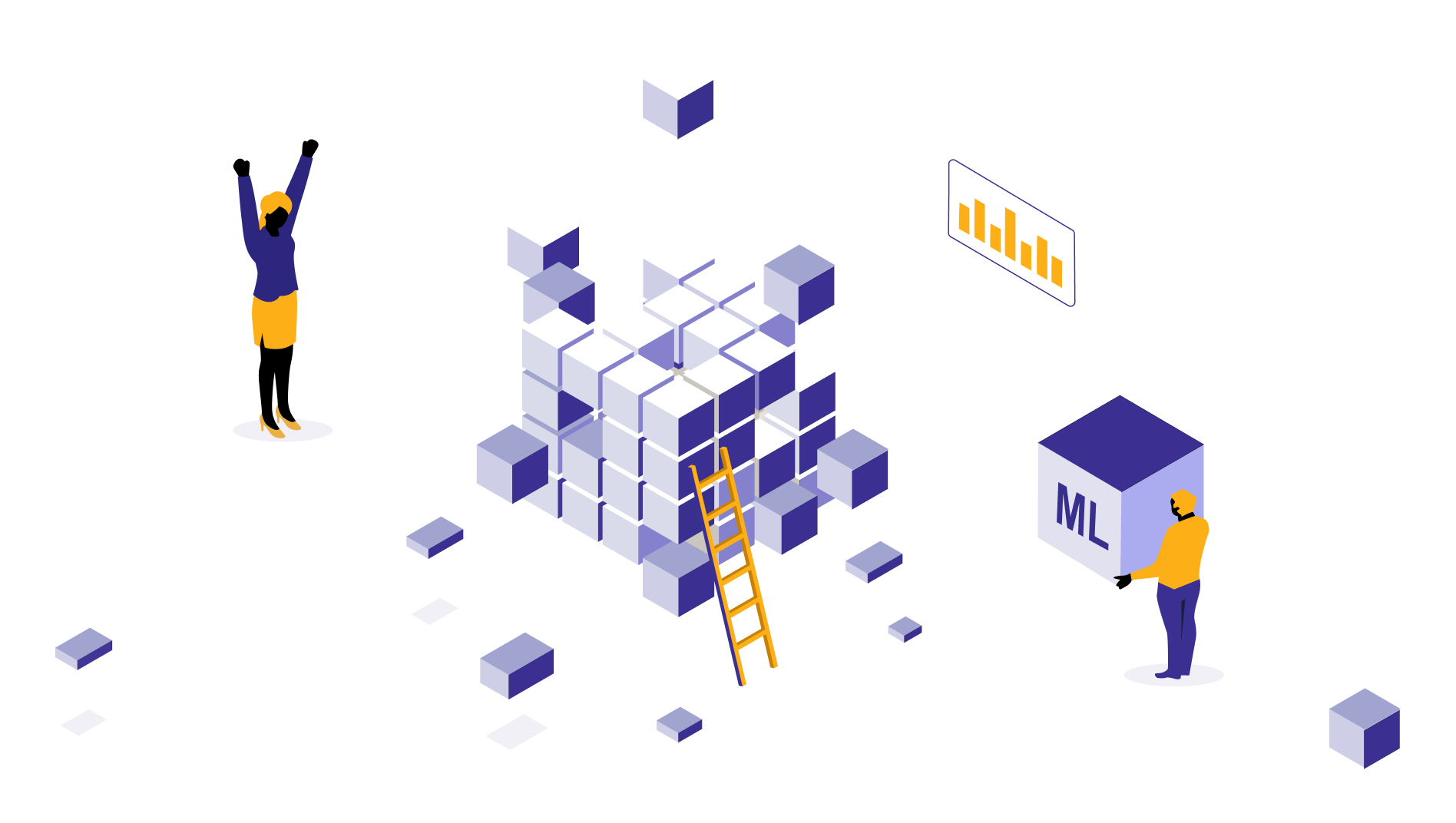Build a vendor-agnostic data platform
A modernistic data platform is becoming a must-have for growing companies, a reliable and secure home for the growing volumes of data. Our senior data engineers and solution architects share their thoughts and expertise on how to build a data platform that’s vendor agnostic.

Subu
Aug 30, 2025 |
18 mins

What is data platform?
A data platform is a centralized hub for data where data from multiple tools and sources are ingested, transformed, and activated for analytics, reporting, and AI use cases. This is like the operating system of the enterprise data, bridging people and data sources seamlessly.
You will need a data platform for the following reasons:
Single source of truth -> where there is a centralized version of data that integrates HR, finance, operations, sales, etc.
Easier to scale this way -> establishing a data platform while data volumes are still manageable is the wise way to go.
Fast decisions -> data walks in; insights walk out right away. Thus, leaders can make the right decisions, faster.
Easier to govern -> easier to lay control and security measures when data is centrally managed.
Foundation for AI and agentic AI -> with more advanced AI solutions walking in, a data platform is the strong foundation you lay.
Legacy systems like old style warehouses, clusters, and SQL servers are getting replaced by data platforms for reasons:
Limited scalability
With every new data source, lengthy redesign takes place.
Becoming more fragmented than ever.
Time consuming, manual operations.
Innovation gap, and more.
Core components of a data platform
There are five to seven components in a typical data platform.
Data ingestion
The first step in any modern data platform is data ingestion, where data from various sources walks into the data platform.
Modern enterprises have data coming in from systems like the following:
Transactional systems (ERP, CRM, POS),
Digital channels (apps, websites, IoT devices),
And external sources such as APIs or third-party datasets.
Without a structured ingestion layer, data becomes fragmented, outdated, or error prone.
That's why data platforms employ Ingestion frameworks like Kafka, Airbyte, Fivetran, and AWS Glue, etc. These frameworks can handle both batch ingestion (nightly loads of finance data) and streaming ingestion (real-time IoT or clickstream feeds).
With the help of ETL tools, pipelines, API calls, data is captured from the sources in real time or in batches, along with its metadata (which contains its origin, freshness, and more).
For example, a logistics company that ingests live GPS feeds alongside batch ERP updates can sync real-time delivery status with its everyday operational reports.
Data storage
The ingested data needs a place to stay, which is the storage layer. Here, leaders have the opportunity to go for data lake, data warehouse, or the most preferred data lakehouses. Selecting one of them boils down to requirements. Here are some examples for each and its best use cases.
Data storage | Examples | How it works? |
|---|---|---|
Data lakes | S3, Azure data lake, etc | Suitable for storing raw and unstructured data |
Data warehouses | Snowflake, BigQuery, Redshift | Store structured, query-ready data. |
Data lake houses | Databricks, Microsoft Fabric | Combination of both the above |
The modern lake houses offer the flexibility of lakes and the governance of warehouses by adding ACID transactions and schema support on top of low-cost storage.
Selecting the right storage option isn’t only about flexibility, scalability, and governance. It's also about how quickly the insights can come out. Many companies go for a combination of one or two options here for this reason. Example: A telecom company storing raw call logs in a lake but structured churn reports in a warehouse.
Data processing
Raw data stored has no purpose as it is. That's where data processing comes in, which includes cleaning, processing, and transformation. This involves removing duplicates, standardizing formats, handling missing values, and applying business logic. Platforms use batch processing engines like Apache Spark or dbt for large-scale historical processing, and stream processing frameworks like Kafka Streams for real-time transformations.
Be mindful if you are employing data lake for storage because it can quickly turn into a swamp without robust and continuous processing.
Example: consider how a bank processes millions of transactions per second, flagging fraud in real-time with stream processing, whereas aggregating data for monthly compliance reports through batch processing.
Data governance
Data governance is an all-encompassing layer, which acts like a guard ensuring the delivery of trusted, compliant, and secure data to the right people. This layer is also crucial to not let the data lake turn into an unusable swamp.
Goverance layer typically holds control over:
Policies (who owns which data, who modified what, and the like)
Access controls
Lineage tracking and masking
Compliance enforcement (GDPR, HIPAA, SOC2), and more.
Tools for governance: Collibra, Alation, or Microsoft Purview (well-suited if you are already in the Microsoft ecosystem).
Features to look for: Catalogs, stewardship workflows, RBAC, encryption, row and column level security, and lineage visualizations, and more.
Data observability
This is like the watchdog that ensures that all the pipelines and data flows are happening normally as scheduled. With tons of data flowing, it’s crucial to have data observability to ensure freshness, completeness, accuracy, and anomalies. Experts call this the dev-ops layer of data, which ensures reliable flow of information.
Without it, you will not know if your dashboards can be trusted and if that displays real-time information.
Here are some tools you can use for data observability: Monte Carlo, Databand, or Soda or custom-built data quality or observability checks
These tools come with automated alerts option, which flags when pipelines fail, schemas drift, or KPIs deviate unexplainably. With timely alerts, there will be proactive care.
Analytics and BI
The is almost the final layer where the true value of data is unlocked, powering intelligence and decisions, through self-service BI, dashboards, and reports.
Some tool suggestions: BI tools such as Power BI, Tableau, or Looker
What these tools can do: Connect to curated data in the platform and deliver reports for sales, operations, finance, HR, and anything you choose.
You might have set up the storage right. But nailing the analytics layer is equally important because this is where trench-level insights are born. This is where the wealth of data comes to serve its true purpose, allowing users to digest and dig deeper into complex information with ease. Without platform-driven BI, the data will be merely locked into spreadsheets again, making it difficult to consume.
For example, a retail chain can monitor and compare sales per square foot across 500 stores in real time with a few clicks.
If you want your data platforms to support real-time analytics, then real-time streaming and ingestion must take place through tools like Kafka, Spark streaming, etc. In this case, data continuously flows into the system and is processed as soon as it arrives.
Machine learning and AI
Modern data platforms go beyond reporting, supporting machine learning and AI-driven analytics. And that’s what modern companies expect too – to handle everything data in one place.
You can redirect the transformed, cleaned, and processed data to power AI use cases like the following:
Predictive models (forecasting demand, predicting churn)
Prescriptive analytics (optimizing pricing, routing)
Gen AI (personalized recommendations, automated reporting)
Tools and frameworks: MLflow, SageMaker, or Vertex AI, plug-and-play models, and custom-built AI/ML tools.
These tools can be used to integrate directly with the platform to manage feature stores, training pipelines, and deployment.
This is how a company can move from descriptive to predictive intelligence from knowing what happened to knowing what will happen.
A logistics provider, for example, can predict delivery delays based on traffic and weather, then automatically reassign vehicles in real time.
Different types of data platforms
Data platforms can be of many types, depending on infrastructure levels, and budget. Here are the common types of data platforms.
On-premises data platform
As the name says, data storage and management happen within on-premises systems of the company. Certain industries prefer this due to their highly regulated nature, as an on-premises data center will give them full control over the data. Example: defense, banking, etc).
Pros:
Fewer to zero chances of security incidents and tighter controls.
Easier compliance management.
Cons:
High initial costs. Need a team to manage data centers 24/7.
Slower innovation cycles.
Cloud-based data platforms (CDP)
The most common type of data platforms is cloud-based, where data and infrastructure is hosted on public cloud like AWS, Azure, GCP, etc.
A typical cloud-based data platform will look like this: A retail company using ADF for data ingestion, Snowflake for data warehousing and storage, and Power BI for business intelligence and reporting.
Pros:
Low initial investment compared to on-premises data platforms.
Cost-efficient if it is properly managed.
Elastic scalability.
Cons:
Vendor lock-ins may happen.
Costs may spiral if not managed properly.
Hybrid data platform
This type of data platform is a combination of both on-prem and cloud environments, which combines the flexibility of cloud as well as security of on-prem services. Scalable workloads can stay cloud, whereas critical data can stay on-prem. Think of it this way, a logistics company maintains its ERP on an on-prem based application. But its analytics workloads are on Azure.
Pros:
Easier to set up and manage, when there is a right data team or partner.
Cons:
Difficult to set up integration and orchestration.
Enterprise data platform
There are platforms like Microsoft Fabric or Databricks that can be used across enterprises, which multiple divisions can use. This way, you can have a single source of truth that connects multiple domains, while institutionalizing governance.
For example, a finance conglomerate company using Microsoft Fabric to maintain data from all domains in one place, powering unified analytics.
Pros:
Becomes a single source of truth for the entire organization.
Higher scalability. More focus to governance.
Cons:
Heavier implementation cycles, which need an expert engineering team.
Political challenges in ownership.
Data analytics platform
These are analytics and BI platforms that are built to go with data warehousing or lake houses. This is much easier as it simply sits on top of existing storage, generating near-real-time insights.
Pros:
Quick set up. Faster time to insights.
Easier adoption even by business users.
Cons:
Limited control over data engineering here.
Need to rely on data warehouse or lake for engineering workloads.
Challenges businesses face when building and implementing data platforms
Though data platforms are highly efficient, data platforms aren’t easy to implement. Here are some challenges data professionals report while setting up a data platform.
Data quality & consistency
Maintaining data quality and consistency is the biggest challenge. This is because businesses pull data from many sources—ERP, CRM, IoT, marketing platforms, and more. Each of the source has their own standards, formats, and quirks. When there are no proper validation, modeling, and standardization, schema mismatches and duplicates can creep in. This is where mistrust begins as reports reflect discrepancies.
Solving this quality challenge in data platforms require well setup ETL/ELT pipelines, quality checks, and metadata management.
Security & compliance
Security and compliance requirements are becoming complex to meet and maintaining a data platform. Sensitive financial or customer information often ends up in unmanaged lakes, becoming a security risk and an open threat.
That’s why security and fine-grained access controls take up major space while setting up data platforms. Selecting vendors or platforms that ensure role-based access, audit logs, and data lineage tracking from day one is the best way to tackle this challenge.
Team lacks technical knowledge
Even if you are going for advanced, cloud-based platforms which claim that they don’t need technical expertise, you will still need analysts, data engineers, solution architects, and scientists.
On top of that, orchestration, pipelining, and other frameworks like Spark, Kubernetes, etc., have steep learning curves. Together, it makes data management a hindrance rather than a growth enabler.
In order to overcome skill gap needed for data platform management, a company may need strategic hiring, upskilling, and vendor partnerships.
No proper objectives & clear goals
Many businesses invest in data platforms without thinking about how it must be a puzzle piece in the big picture of their data platform architecture. Also, data platforms are often seen as a tech initiative rather than a business-driven initiative.
If you don’t want to face this challenge, then starting with a clear why is a must. Whether it’s about enabling AI and ML technologies or improving data quality or enhancing report availability.
Scalability
Scalability isn’t only about storage or volumes. It’s also about optimized spending, speed, pipeline performance, and more. All these factors must be considered carefully, analyzing not just the present but future business scenarios as well.
Data platform strategy frameworks
So, how to get it right? If data platforms are daunting and challenging to begin with? With the right strategy framework – something that’s customizable for your data volume, goals, AI interests, compliance requirements, and other considerations.
Set the right objectives
No need to rush. Get the clear idea of what a data platform can do for you.
Is it improving customer experience, measuring KPIs in real time, supporting decision-making? Every goal counts. Goals over following tech hypes any day.
Selecting the right data platform
Plenty of tools. Plenty of functions. It's difficult to select the best one for every function.
And the type of data platform? Should i go for hybrid or cloud-based? It’s too real.
Unless your industry is highly regulated, a cloud-based managed services should do their job.
About the tools for ingestion, processing, and BI, it’s all about flexibility, budget, scalability, learning curve, and compliance needs.
Here’s is a quick guide on selecting the tools for a data platform.
Tool category | Examples | When to choose what | Features to look for |
|---|---|---|---|
Data ingestion tools | Fivetran, Airbyte, Stitch, Talend, Apache Kafka, AWS Glue. | Fast integrations with minimal setup, then choose Fivetran or Stitch. Looking for open-source, then choose Airbyte. Real-time ingestion, then choose Kafka. | Pre-built connectors, batch + stream ingestion, auto-updates when schema changes, etc. |
Data storage | AWS S3, Azure Data Lake, Google Cloud Storage, Snowflake, BigQuery, Databricks, etc. | Scalable and cost-effective storage, then S3 or Azure Data Lake. Analytics workloads, then choose Snowflake. Data science, analytics, and AI workloads, then choose Fabric or Databricks. | Scalability, elastic features, native integration, etc. |
Data processing | Apache Spark, dbt, Flink, Databricks, Synapse, etc. | SQL-first transformations, then dbt. Big data workloads, then choose Spark or Databricks. Streaming analytics, then Kafka. | Developer-friendly, orchestration support, lineage logs, batch and stream support. |
Data governance | Alation, Collibra, Microsoft Purview, Apache Atlas, Amundsen, etc. | Alation or Collibra for large enterprises, Already using Azure or Microsoft, then Purview, Open-source governance, then Atlas. | Meta-data management, data lineage, RBAC, etc. |
Data governance
Without governance strategy, there are high chances for the lake to become a swamp. That’s why you need to carefully evaluate standards, roles, stewardships, control, metadata management, and lineage visualization. Fostering a culture where data is everyone’s responsibility and not just IT teams’ is what right governance is all about.
Monitor and optimize
Once you set up a data platform, the real job begins there as it requires monitoring every day. With data observability platforms and frameworks, you can do this, checking the health of pipelines, governance, compliance, cost leakage, and data quality.
Supporting ML/AI initiatives
Modern businesses require more than reports. Supporting ML and AI from the start ensures the data platform becomes a driver of innovation rather than just storage. Your data platform has the potential to drive ML and AI workloads on top of the golden layer that already exists – from Building feature stores, integrating ML frameworks like SageMaker, Vertex AI, or MLflow, and supporting retraining pipelines.
Final thoughts
Designing and implementing a modern data platform is not just about choosing tools — it’s about bringing structure, governance, and clarity to an otherwise chaotic landscape of sources, systems, and stakeholders. The truth is, many companies struggle: data lakes become swamps, teams spend months fighting integration issues, and business users lose confidence in the very systems meant to empower them.
That’s where we come in. We help organizations set up data platforms that are scalable, compliant, and business-ready from day one. We recently helped a global retailer unify siloed POS, supply chain, and customer data into a centralized analytics platform — cutting reporting time by 70% and enabling predictive demand forecasting.
Instead of fragmented experiments or costly missteps, we provide a clear roadmap, skilled execution, and ongoing support, ensuring your data platform doesn’t just exist but actively drives business value.

by Subu
With over two decades of experience, Subu, aka Subramanian, is a senior solution architect who has built data warehousing solutions, led cloud migration projects, and designed scalable single sources of truth (SSOTs) for global enterprises. He brings a wealth of knowledge rooted in years of hands-on expertise while constantly updating himself on the latest technologies. Beyond architecture, he leads and mentors a large team of data engineers, ensuring every solution is both future-ready and reliable.



